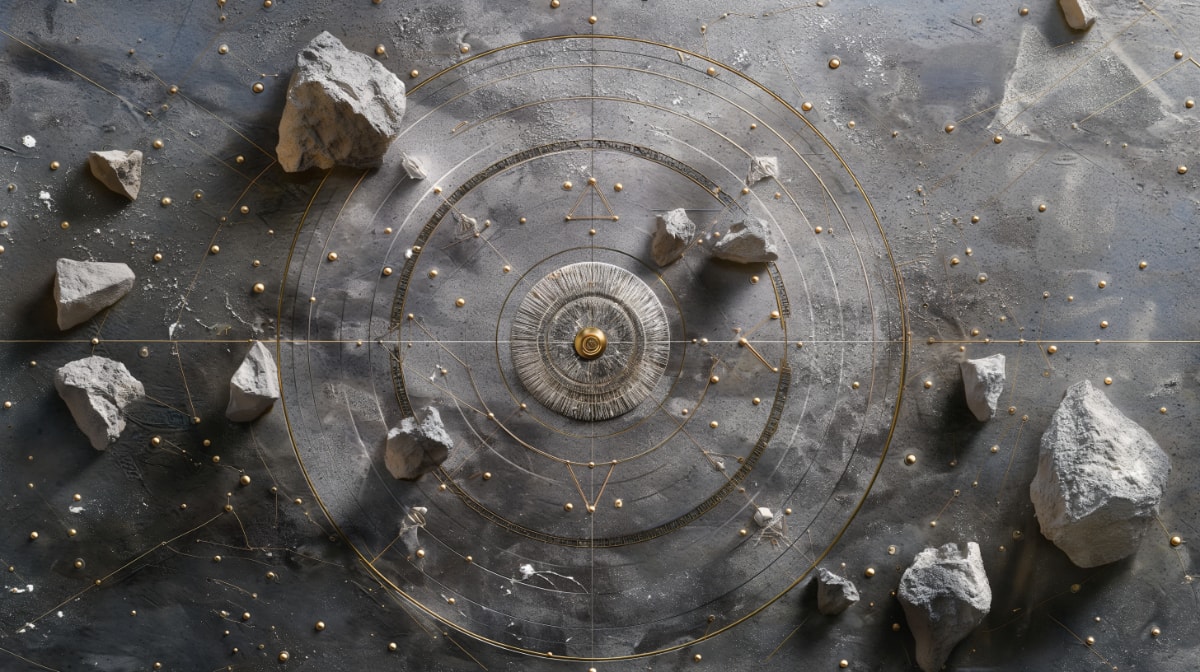
What is a birth chart?
Introduction
A natal chart is a series of symbols, a potential. Astrology hypothesizes that what was above at the time of an individual's birth mirrors the psychic plane, encapsulated by the ancient astrologers' adage: "As above, so below." Contemporary astrology is infused with psychological and analytical concepts, and its interpretation is purely Western. However, it has always drawn inspiration from fundamental archetypes that nourish human consciousness.
The stars were gods to the ancients. Today, they represent more universal principles. The magic behind this is synchronicity, a concept elaborated by Carl Gustav Jung. It happens simultaneously above and below. To paraphrase Obelix's fate, the human species is not separate from Creation; it is immersed in it.
A natal chart is thus a potential acquired at birth. One should imagine it as a battery with multiple poles. Each pole represents a psychological function, energy, archetype, or general idea. In Astrology for the Millions, early 20th-century astrologer Grant Lewi described a natal chart as a "vitasphere."
In a natal chart, each "planet" or astrological symbol is more or less connected to the others, thus offering a dynamic portrait of a personality. These planets are briefly described below.
| Sun • The ego, the individual. Our will-to-be. | |
| Moon • Emotions, our emotional expression. The past. | |
| Mercury • The intellect, our way of expressing ourselves intellectually, our way of thinking. | |
| Venus • Our desire to unite, to socialize, our aesthetic perception, our passion for harmony. | |
| Mars • Our vital energy, our will to do. Aggressive, assertive principle. | |
| Jupiter • Our desire to learn, to go beyond borders. Expansive factor. Transpersonal planet. | |
| Saturn • Time, cycle, structure. What we build in life. Transpersonal planet. | |
| Uranus • Sudden things, individualism, instability, revolutions. Transpersonal planet. | |
| Neptune • Our desire to be part of a greater whole. Religions, mysteries, fog, ignorance. Transpersonal planet. | |
| Pluton • For astrologers, Pluto remains a planet. Symbol of the unconscious. Transpersonal planet. | |
| Chiron • A planetoïd. Our wounds, our capacity to heal. | |
| North Node or Head of Dragon (the opposite is the Tail of the Dragon or South Node). Not planets but essential to understand a person's general emotional attitude (and reactivity). |
The Zodiac
The twelve zodiac signs are familiar to us, having seen them many times before or read about them in the newspapers. This is the zone through which the planets seem to move. It's important to understand that this is a symbolic journey. When a person is born in Cancer (i.e. when the Sun is in the sign of Cancer), it is no longer the constellation of Cancer of 2,500 years ago. Astrological signs are based on the equinox, i.e. when day equals night (in spring, around March 20).
A natal chart depicts the sky at the moment of birth. This symbolism originated in the northern hemisphere and has taken root in people's minds as the Western world has developed. Here, then, it's all about symbols.
Houses (or sectors)
Calculations determine twelve zones called houses or sectors from the rising sign (always shown on the left). Like the planets, the houses have their own symbolism. They are read in the order described in the table below. These houses also have meanings attached to them. For example, the first house is the house of personality, and the second house is that of assets, self-worth, etc.
These houses are also naturally associated with signs and a planet (or two) that "rules" them. Some astrologers compare them to zodiac signs, even if their significance goes beyond them.
Aspects
Finally, to return to the allegory of the battery with several poles, we can see that these poles are connected by specific "wires." These are predefined angles. Planets or astrological points in opposition face each other at more or less 180º (we say more or less because a certain latitude is allowed, called the orb).
Many other aspects exist (including sextile and quincunx), but my analysis will be limited to the four main angularities.
Finally, think of a natal chart as representing your world, with you at the center of it. This means that the so-called dynamic aspects (or challenging aspects, i.e. squares and oppositions) run through the center, while the more accessible elements remain on the periphery. Sometimes, what's easy tends to make us shy away from more complex situations... Or, in the face of complexity, if several planets are dynamically linked, there's a good chance that a planet forming a harmonic aspect with them will be the psychological answer to the problem.
Main aspects (others exist)
| 0º | Conjunction |
The planets fuse their energies with varying degrees of success. |
| 90º | Square |
The planets are dynamic with each other. There is conflict, but it leads to action. |
| 120º | Trigone |
The planets are in harmony, which may mean that energy flows very (too?) well between them. |
| 150º | Quincunx |
Planets coexist more or less well. Adjustments needed. |
| 180º | Opposition |
The planets conflict, each pulling on its side. Static conflict position (as opposed to square) |
An example of a birth chart
In this example, several symbols have not been described in this text. Several astrological schools exist, and astrologers may or may not favor a particular asteroid, angle or other.